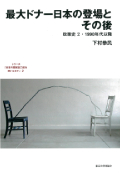Japan’s Rise to Top Donor and Its Aftermath (Policy History II: 1990s-) (Reconsidering the History of Japan’s Development Cooperation Series, Vol. 2)

Japan became the world’s largest donor of official development assistance (ODA) in 1989. However, from around 2000, the amount of Japanese ODA started to decrease; ODA expenditure from the general account is now down to half of its peak amount, and in terms of net expenditure, Japan has stepped back to the fourth largest donor in the world. This book focuses on two different periods: the 1990s, when Japan was the largest donor; and the 2000s and beyond, when Japan was seeking how its development cooperation should become after its position as the world’s largest donor was taken over by the United States. The book discusses the changes in Japan’s development cooperation policies over these two periods, such as what the differences in development cooperation between these two periods are and what happened to Japanese development cooperation.
The book also looks at future prospects, to consider whether the wisdom accumulated through Japan’s development cooperation activities can identify new opportunities to make contributions to the world, and if so, what possibilities exist.
This is the second volume of the seven-volume series "Nihon no Kaihatsukyoryokushi wo Toinaosu (Reconsidering the History of Japan’s Development Cooperation)" (in Japanese), which was published as an output of “Japan's Development Cooperation: A Historical Perspective,” a research project by JICA Ogata Sadako Research Institute for Peace and Development.
scroll